Dear Steemit friends :
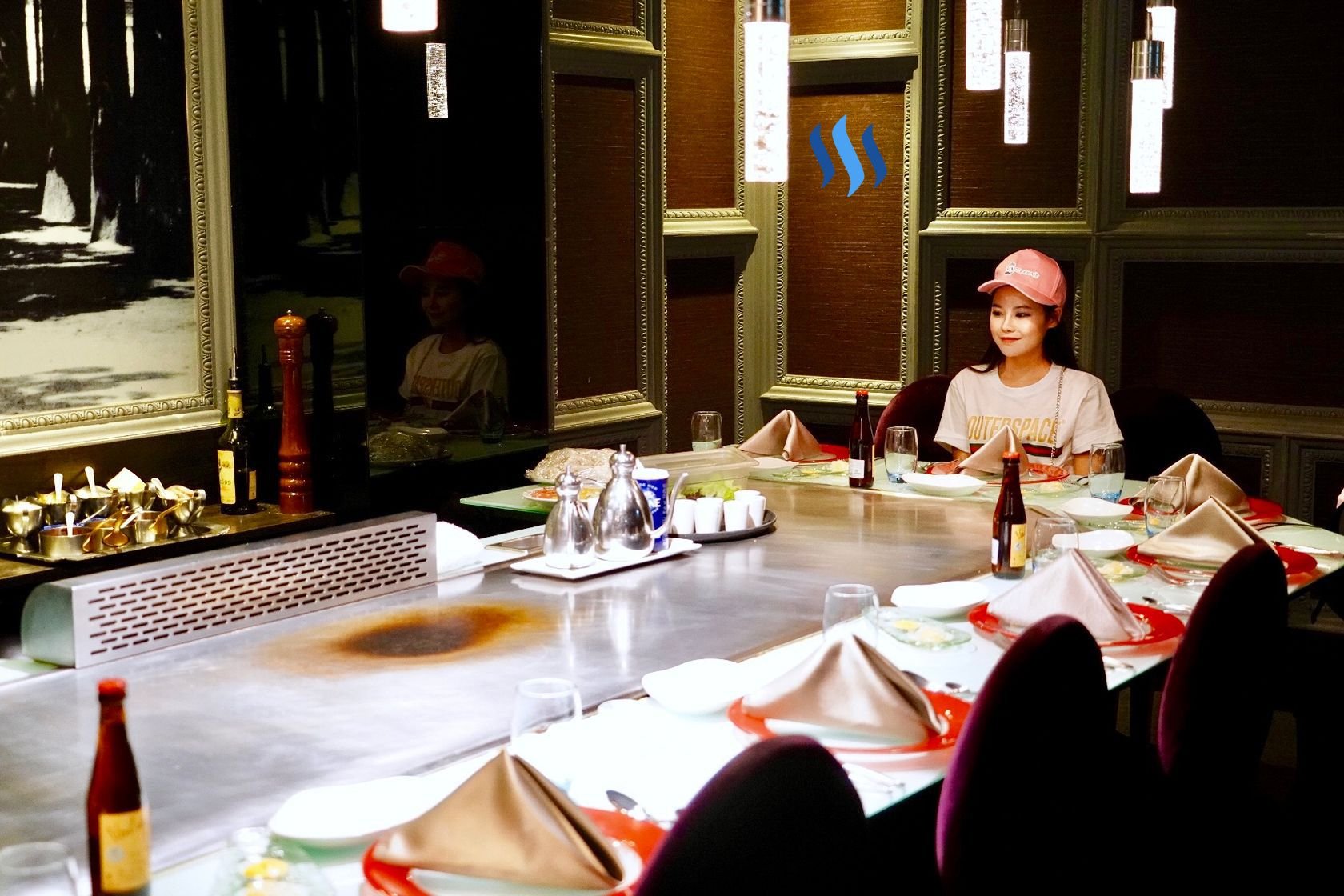
Navigating the food landscape in Taiwan often feels like an exercise of piecing together fragments of history to an island wrought with so many cultural influences. Whether it's the native aborigines, Han Chinese, Japanese or the KMT, Taiwan has long endured a plethora of cultural influences which shape it's society and culture today. Though the putonghua speaking Taiwan often masquerades as Chinese in culture (including it's food), notwithstanding, it is a place laden with delicacies from all around the world, each with their unique footprint, each with their cultural heritage.

Today, Miss. Delicious will be paying a visit to Chamonix Teppanyaki in Taipei. This well reputed establishment is owned and run by the Wowprime Group, a food and hospitality conglomerate that has become a success story case study for businesses in Taiwan. It is often lauded as one of the top employers in Taiwan with the highest ratio of university educated employees in the food and hospitality industry. I don't personally think having a university degree is as important as people make it out to be, and in the context of working for a restaurant, even less so. Still, it is an interesting fact!
In-fact, Wowprime has built up such a reputation that it has been listed in Forbes Asia's 200 Best Under a Billion list of smaller public companies. Employees are paid every two weeks, and receive pro-rata bonus payments at the end of the month. As such, the Wowprime group boasts one of the lowest employee turnover rates in the entire industry at 25%. Low turnover rates mean that less money is spent on training new staff and is a reasonable indicator for employee satisfaction.
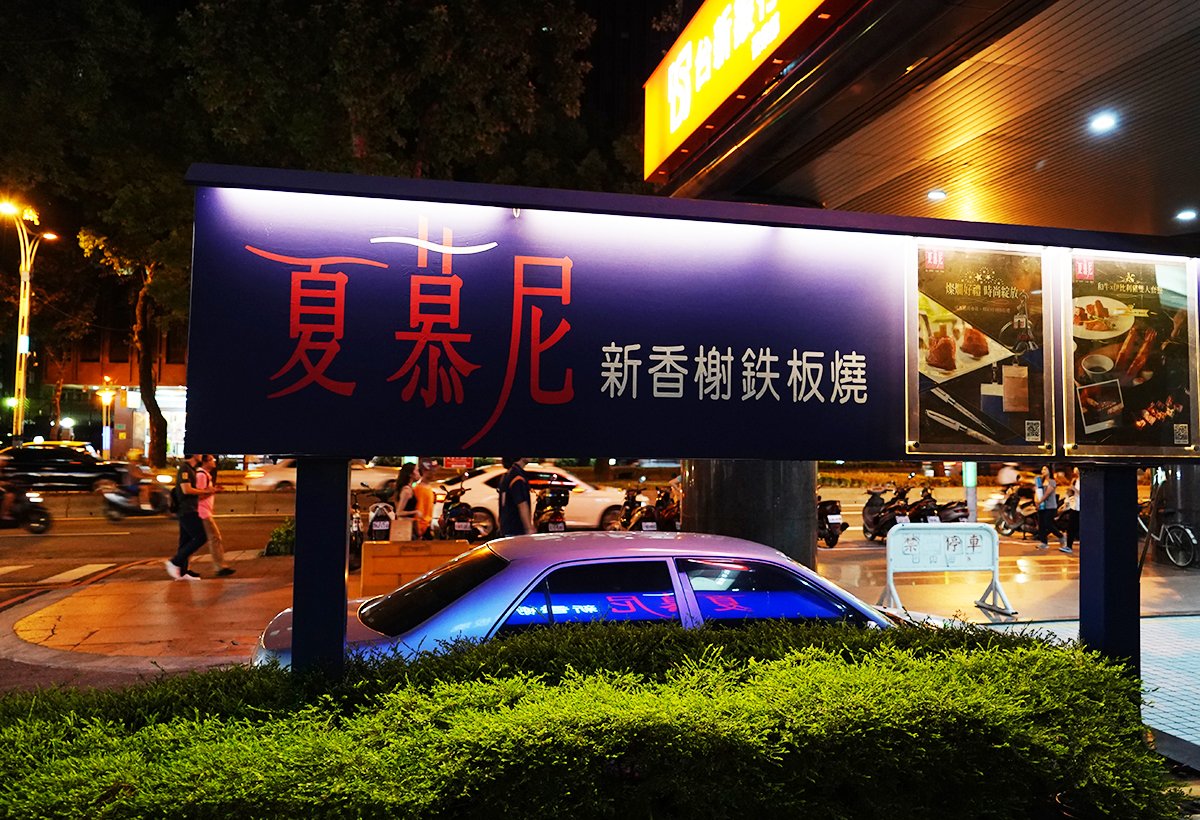
For Wowprime group, Chamonix represents their first foray into high-end Teppanyaki. For the unacquainted, Teppanyaki is a style of Japanese food where the food is cooked on an iron griddle. Typically, the food is cooked infront of guests and thus the skill of the chef becomes an important part of the food experience. Teppanyaki restaurants can be found all over Taiwan, but it is by no coincidence that the Taiwanese love Japanese food. Rather, it has a lot to do with the history of Taiwan and Japan.
Quick history lesson
In 1895, the island of Taiwan was ceded to the Japanese Empire when the Chinese lost the first Sino Japanese war. For 50 years, the Japanese wielded their influence on the island, on the one hand helping develop the island economically, building infrastructure, developing industry etc. but also stripping the national identity of Taiwan and it's inhabitants. For those 50 years, the education system followed that of Japan. All classes would be taught in Japanese and mandarin or the the native dialect was banned from official use.
Despite the repressive rule, the Colonial Government brought about stability and significant growth in Taiwan during their 50 years in power. Long after the Japanese gave up Taiwan and left, their occupation continued to affect the local people. After all, several generations of people were subjected to the Japanese way of life, essentially morphing their cultural identity.
Chamonix
In my previous posts about Taiwan, I frequently made comparisons of the streets and architecture to that of Japan. Reading more about the history of Taiwan and Japan, I hope the similarities between the two make more sense.
Similarly, knowing that the Japanese way of life affected several generations of Taiwanese people, is it a surprise that Japanese food continues to be popular in Taiwan? I guess not.
Chamonix has been so popular that it has now opened nearly two dozen branches in Taiwan with an outlook of expanding to mainland China with many more.
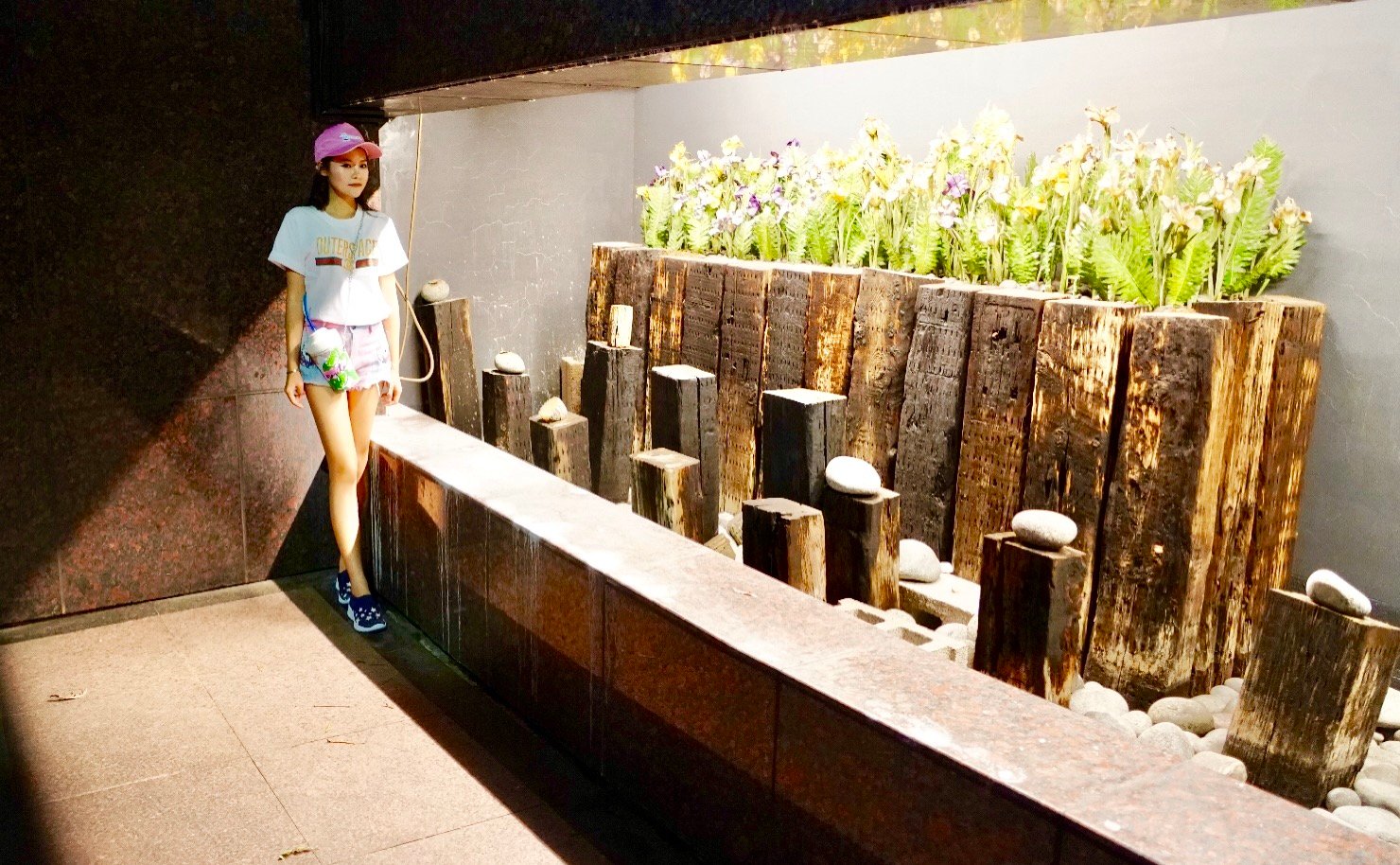
Getting a table isn't too difficult. Most people in Taiwan will pre-book with tripadvisor or something like opentable. Usually a deposit to cover the cost of the meal secures your table but for tourists like myself a phone call a day in advance is the usual etiquette.
The branch I visited was tucked away in the basement. It almost felt like the secrecy of location was intentional for the purpose of exclusivity. Once I found it and went inside, I realised my hunch was probably not too far from the truth.

The central dining area was spectacular. It was shielded by a veil of modesty beads, which teased the curious circular shape of the dining table and the Teppanyaki iron griddle's where the food magic happens.
Sadly, this area requires even more advanced booking which meant that I was relegated to a more secluded and less exciting area in another part of the restaurant.


This waitress took me to one of the many rooms just at the back of the restaurant. The setup in these rooms will be more familiar to frequent Teppanyaki goers, a elongated semi circle for the iron griddle, seats arranged around the perimeter.
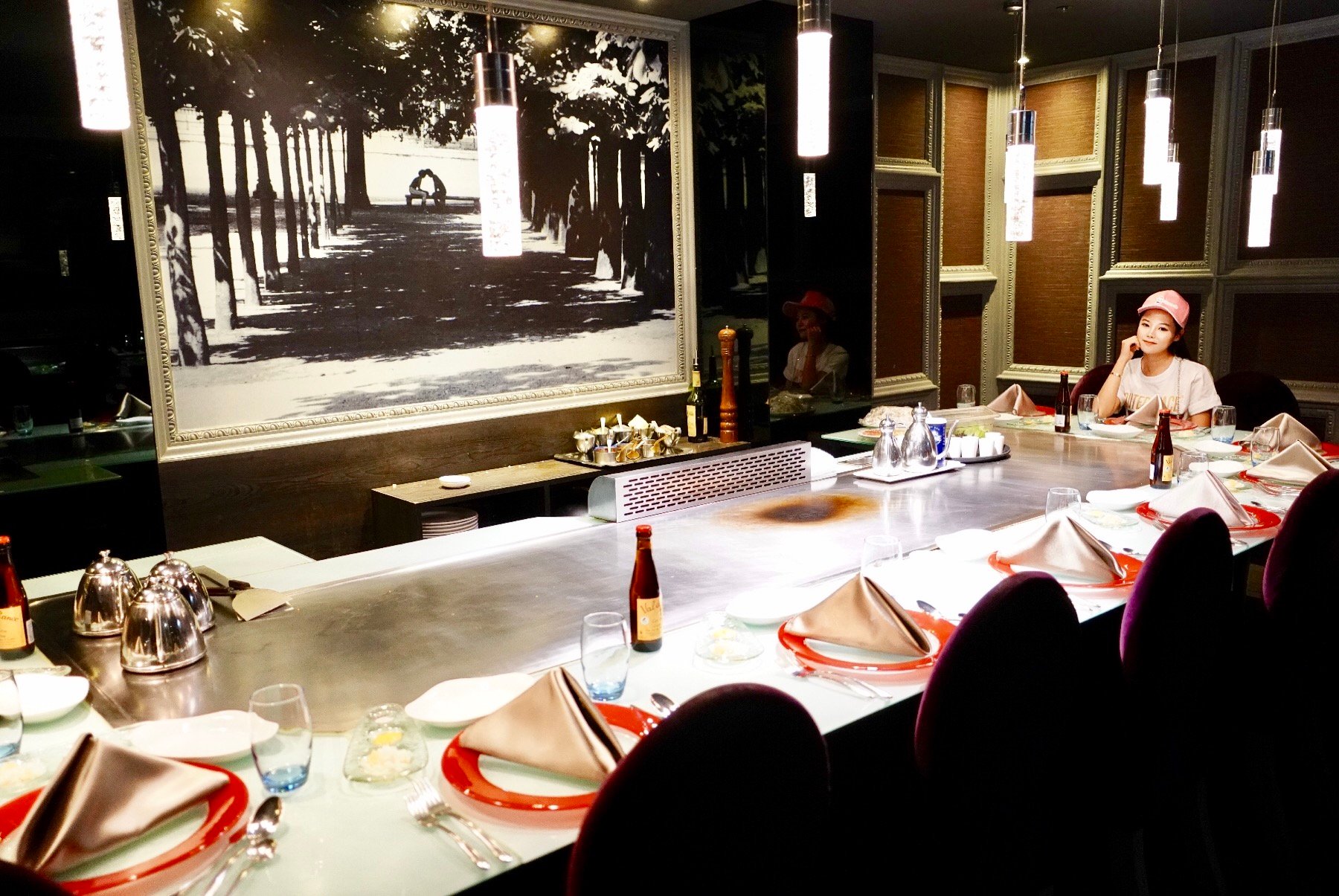
The Set Menus
The usual way to order at Teppanyaki restaurants is with a set menu instead of a la carte. At Chamonix, it is no different and you also have the choice of two set menu's or ordering a la carte.
The two set menu's differ in price quite considerably, the more expensive one offers some exclusive steak of the 1855 variety as well as imported seafood from Norway and Australia.
I opted for the New Champs Elysees menu which seemed to be the more popular choice, perhaps because it is also less than half the price of the other set menu and seemed to offer more or less the same dishes.
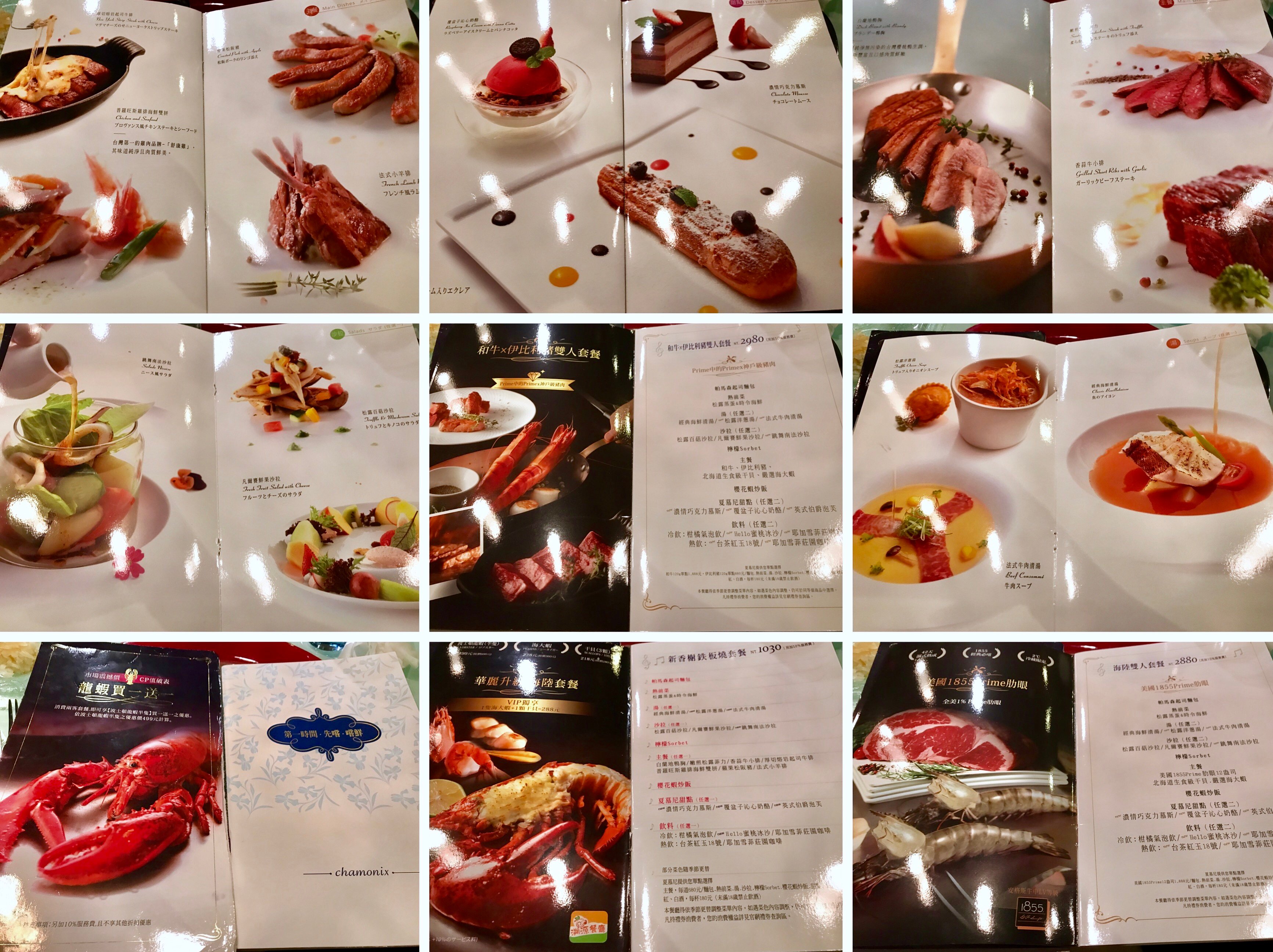
The Food
Complimentary bread both warm and soft and smells like it just came out of a Subway oven.

The warm appetizer of choice here is the Scallop. It is served with a hint of quite thick creme which could almost work as it's own little soup. As you can see, the servings here ascribe to that of other luxury dining places with bite size pickings served on large plates. The scallop itself, soft and juicy confirming it's freshness.
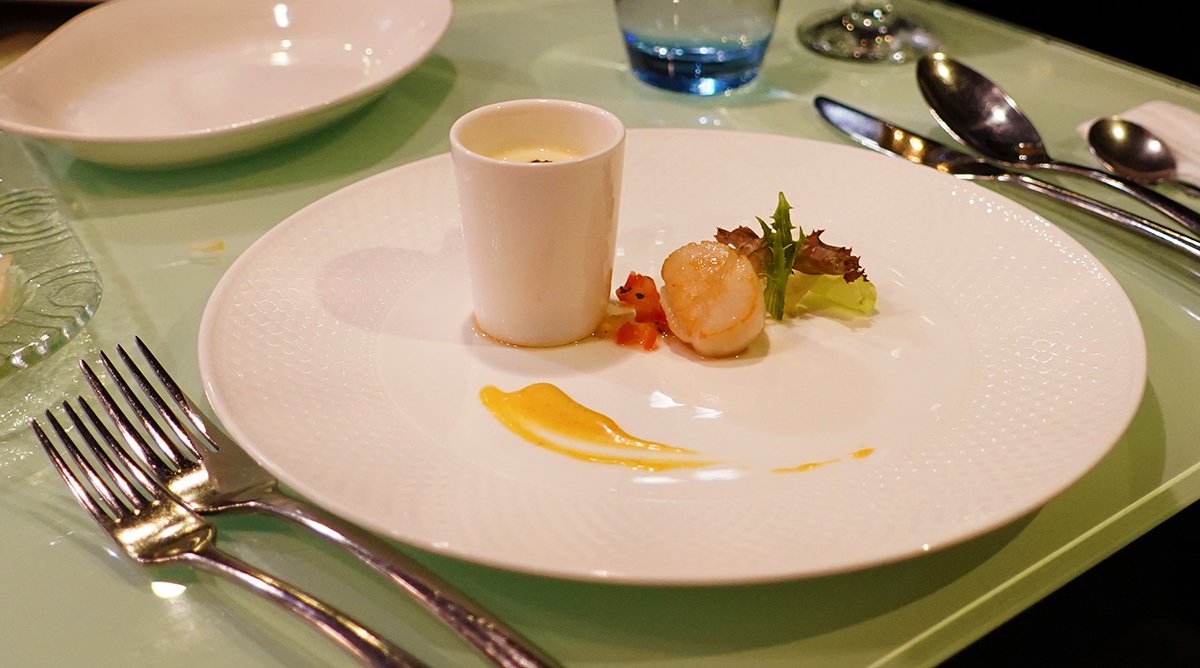
Soups
First up, the Classic Seafood Soup. A very light soup which i'm sure western diners would find quite bland. However it does draw your taste buds to the fish fillet which itself is again very soft and full of fresh sea aroma. The tomato base in this case is sour, but only very slightly. It's a delicate balance but I think the same dish in China would have over done it with the saltiness. In this regard, the soup is very well done.
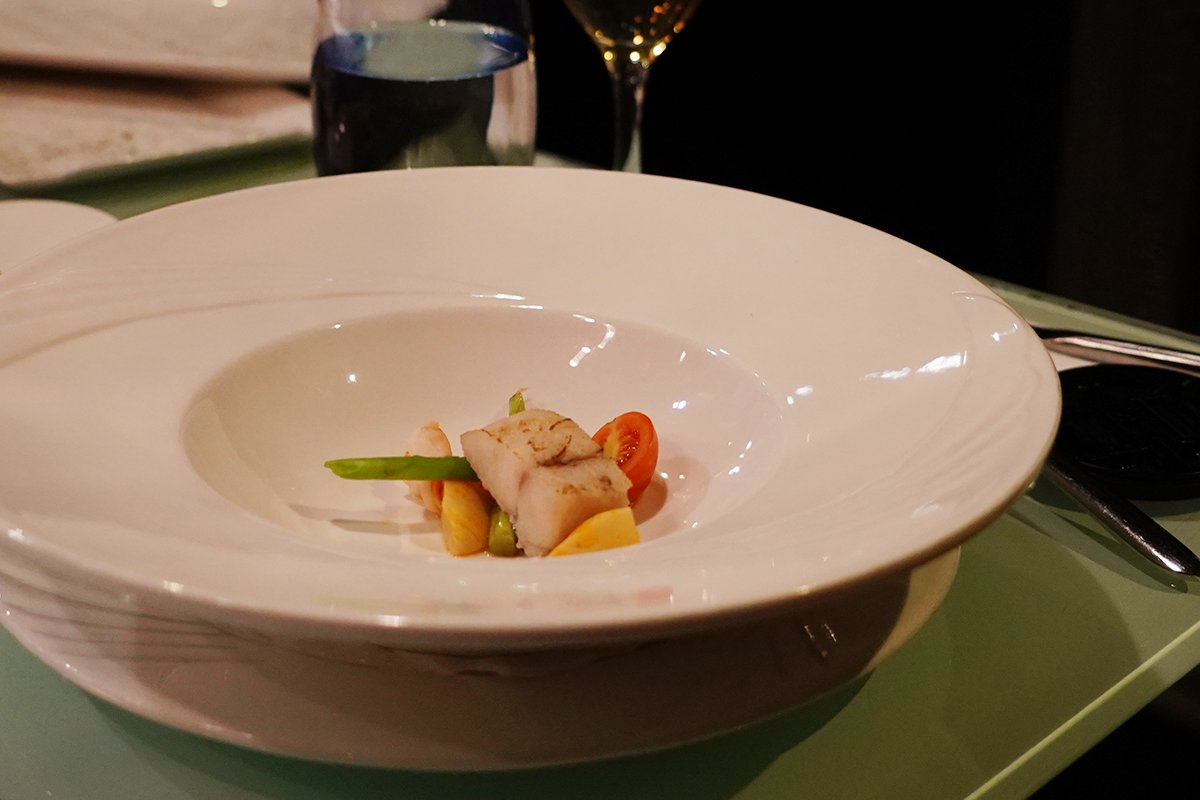
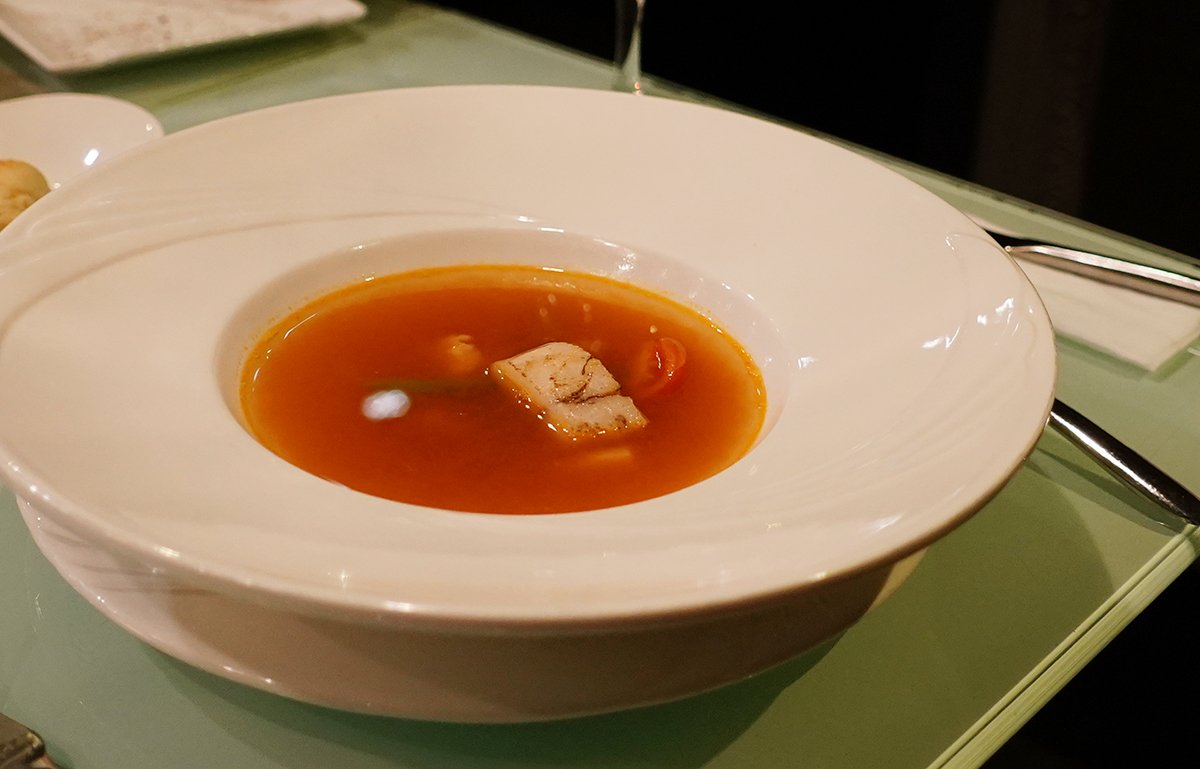
Soup number two is the tender beef slice gravy soup. Acting as a precursor to the beef coming in the main course, the soup was again very plain, so much so that it surprises you how good gravy can taste when diluted to this degree and not overwhelming the taste of the beef.
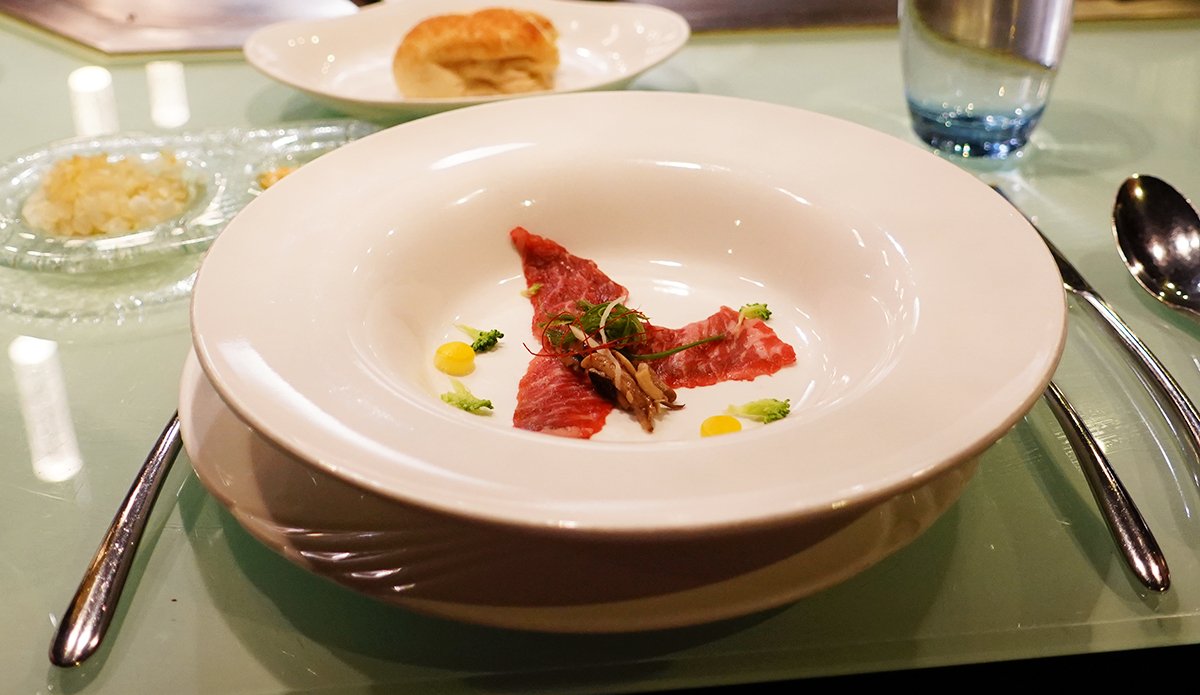
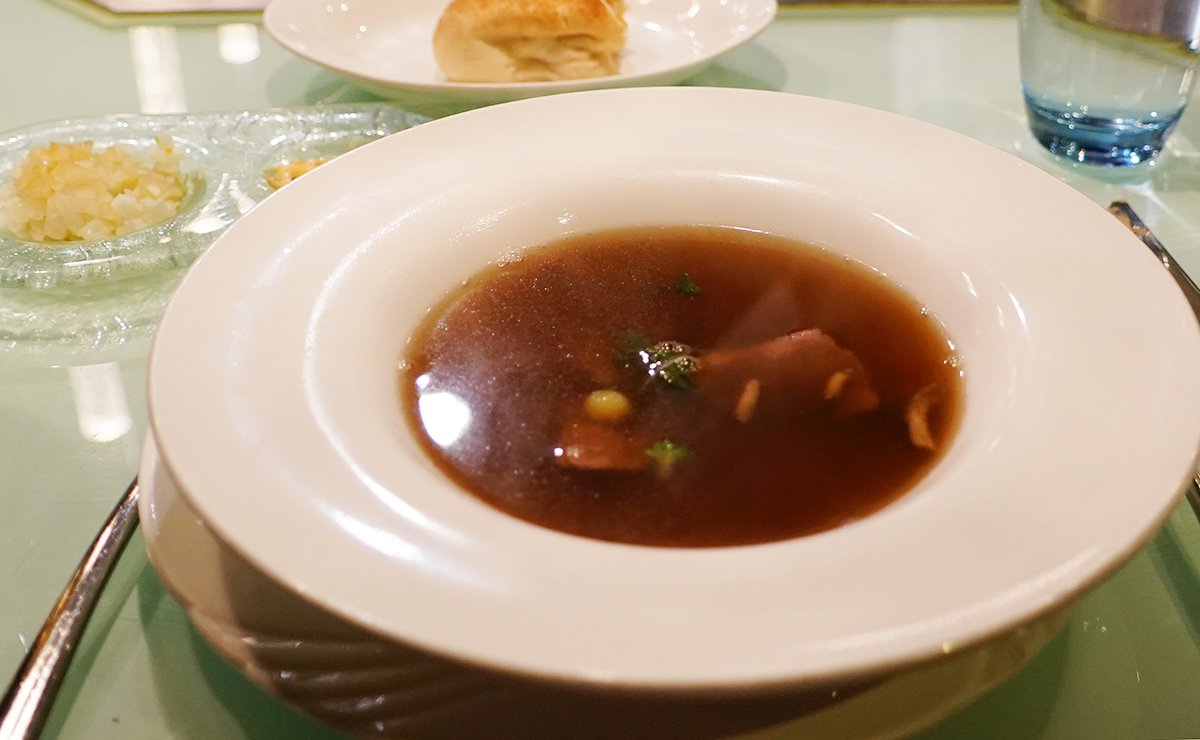
One of the highlights of the Teppanyaki experience is watching the chef prepare the food right in front of you. The chef uses two inverted triangular shaped spatulas to cook the food on the iron griddle. Often wielding them like swords, using them to cut the food, as well as stir fry them. It's weirdly hypnotic watching them work and honestly is one of y favourite parts of the Teppanyaki experience.

Fruit Salad
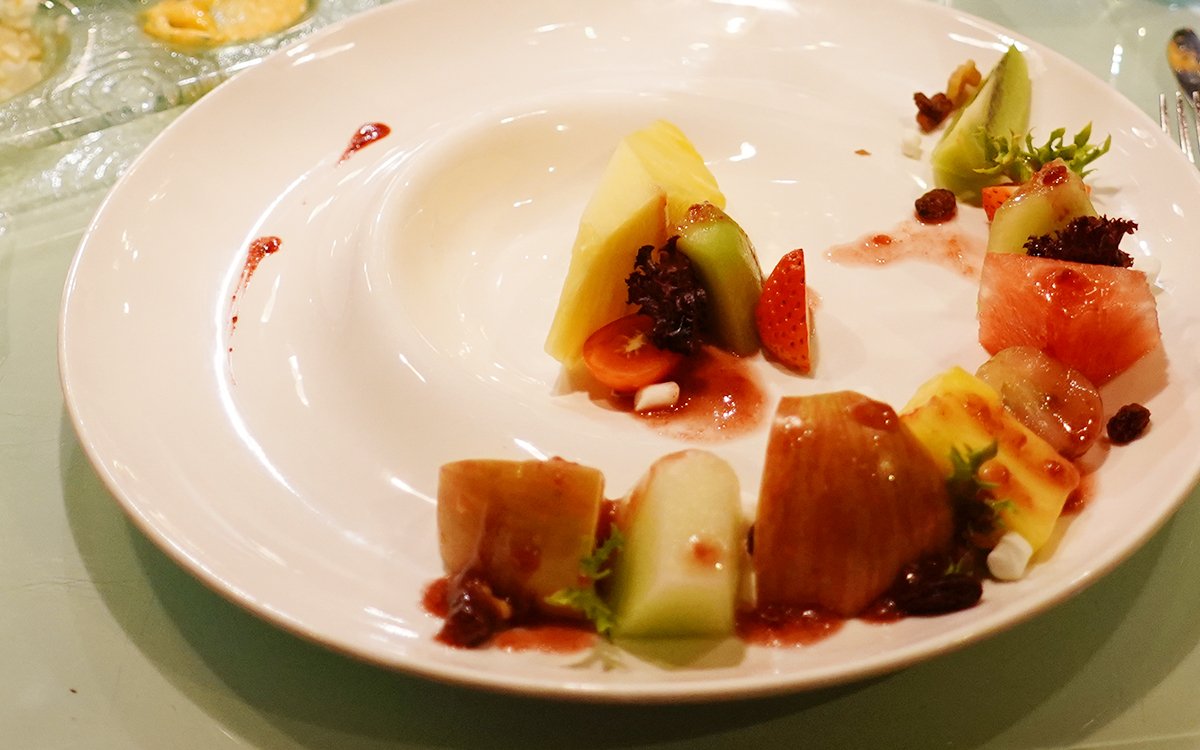
Lemon Sorbet Shot
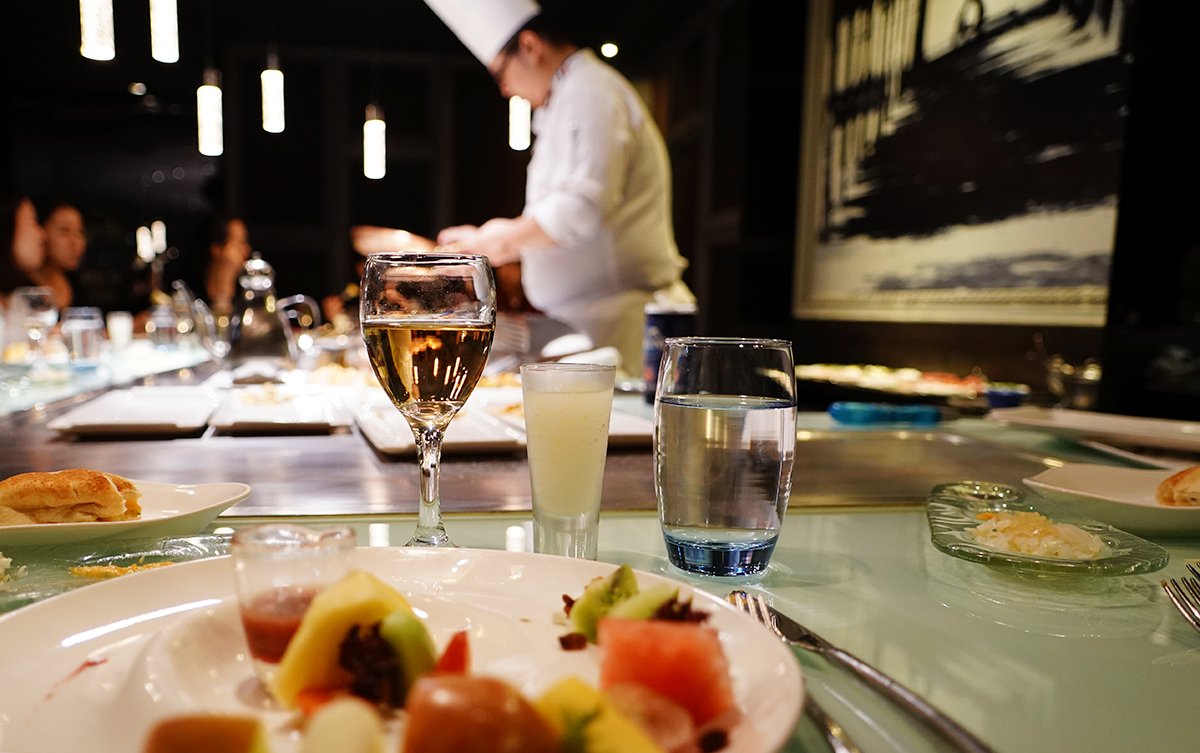
Truffle & Mushroom Salad
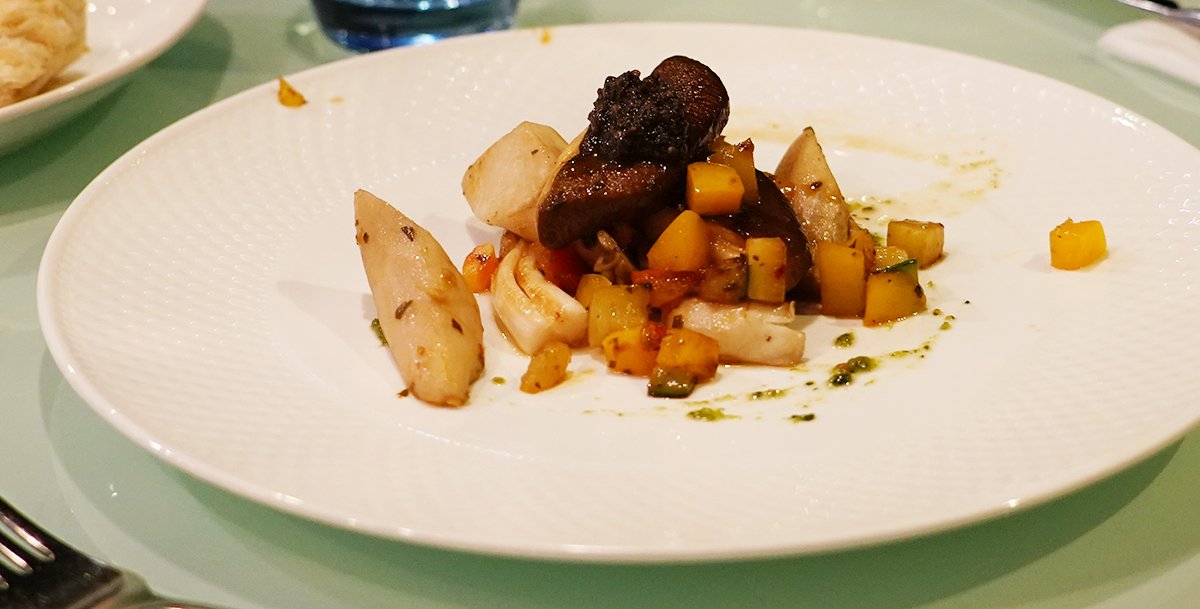
Pan fried vanilla chicken breast with Pesto
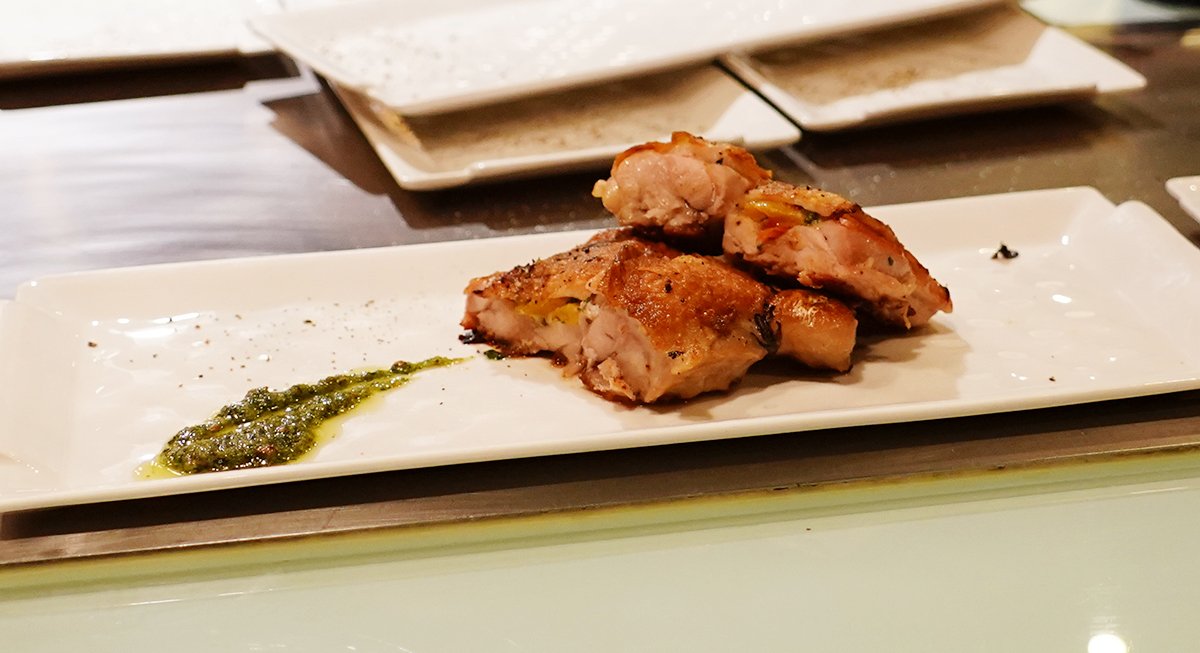
Shrimp stir fried rice

French style crisp fried Bass fillet
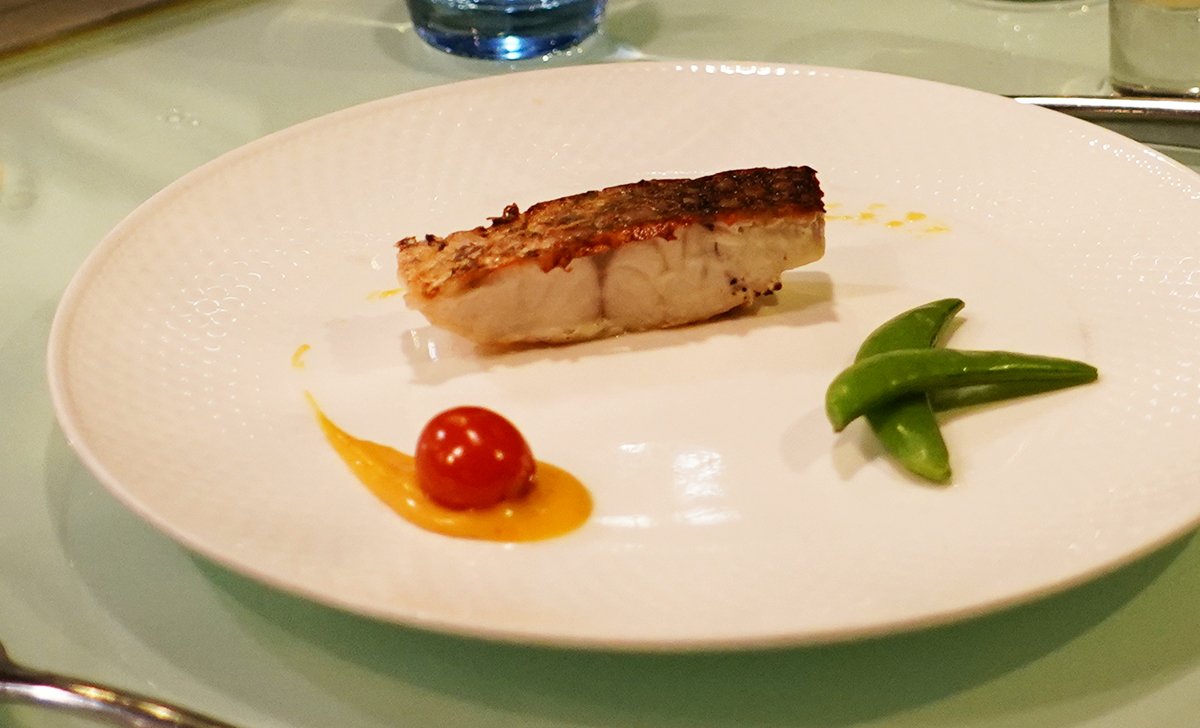
Sautéed Tenderloin Steak with Truffle and Garlic

Lyon Chicken breast cutlet and seafood combo
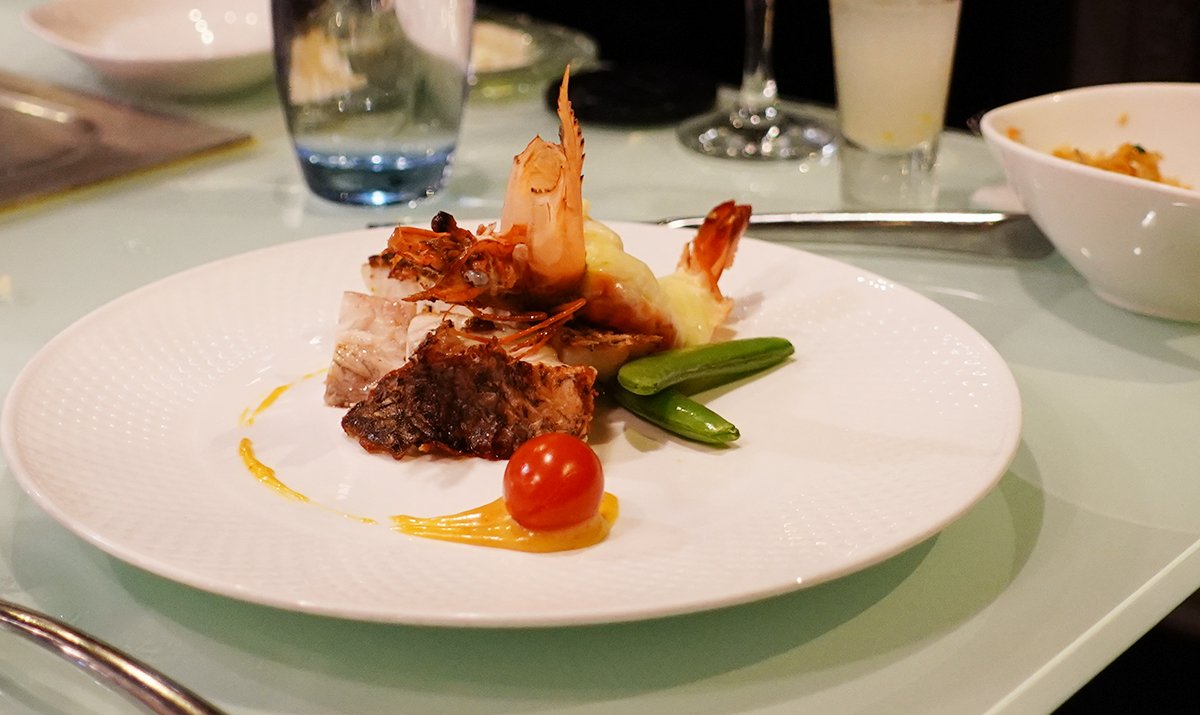
Dessert
Strangely, the dessert is served in another part of the restaurant. I would assume it is because the griddle tables would melt the desserts very quickly.
First up we have the Chocolate Mousse. The theme of the restaurant is delicacy, and even it's desserts are made to be "sweet enough". This chocolate mousse is no different and tastes surprisingly "light" for a traditionally rich dessert.

And finally, the Strawberry Sorbet with Cheese. Topped off with a mini Oreo biscuit, my absolute favourite dessert and a great way to cool down after a very hot main course.
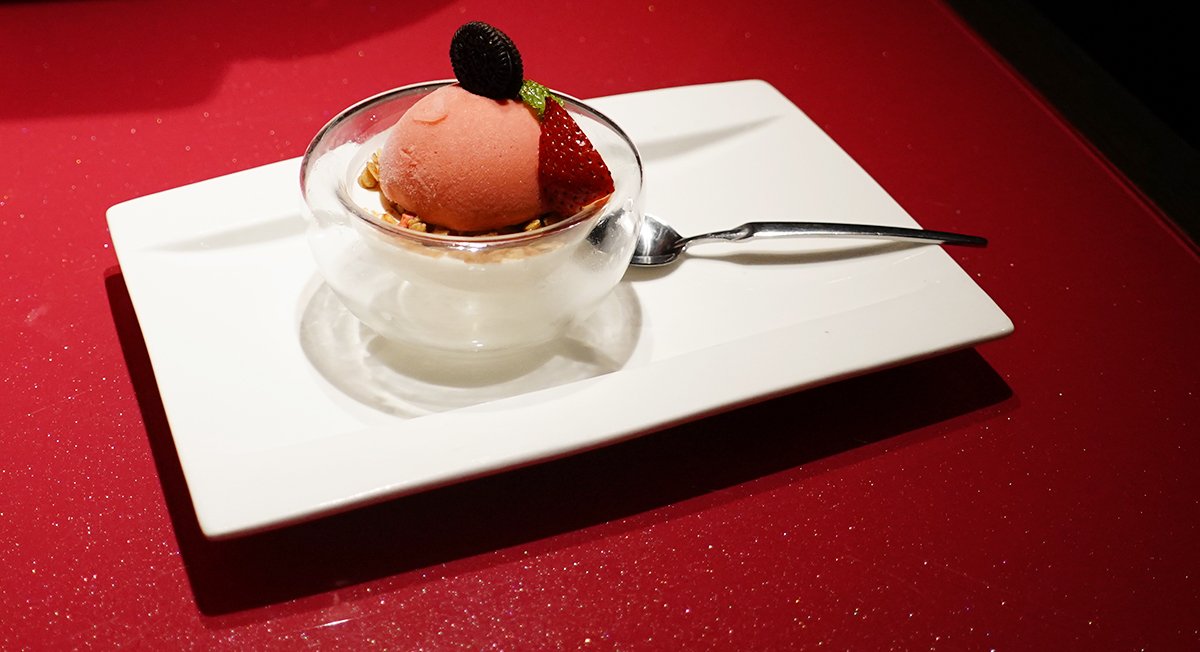
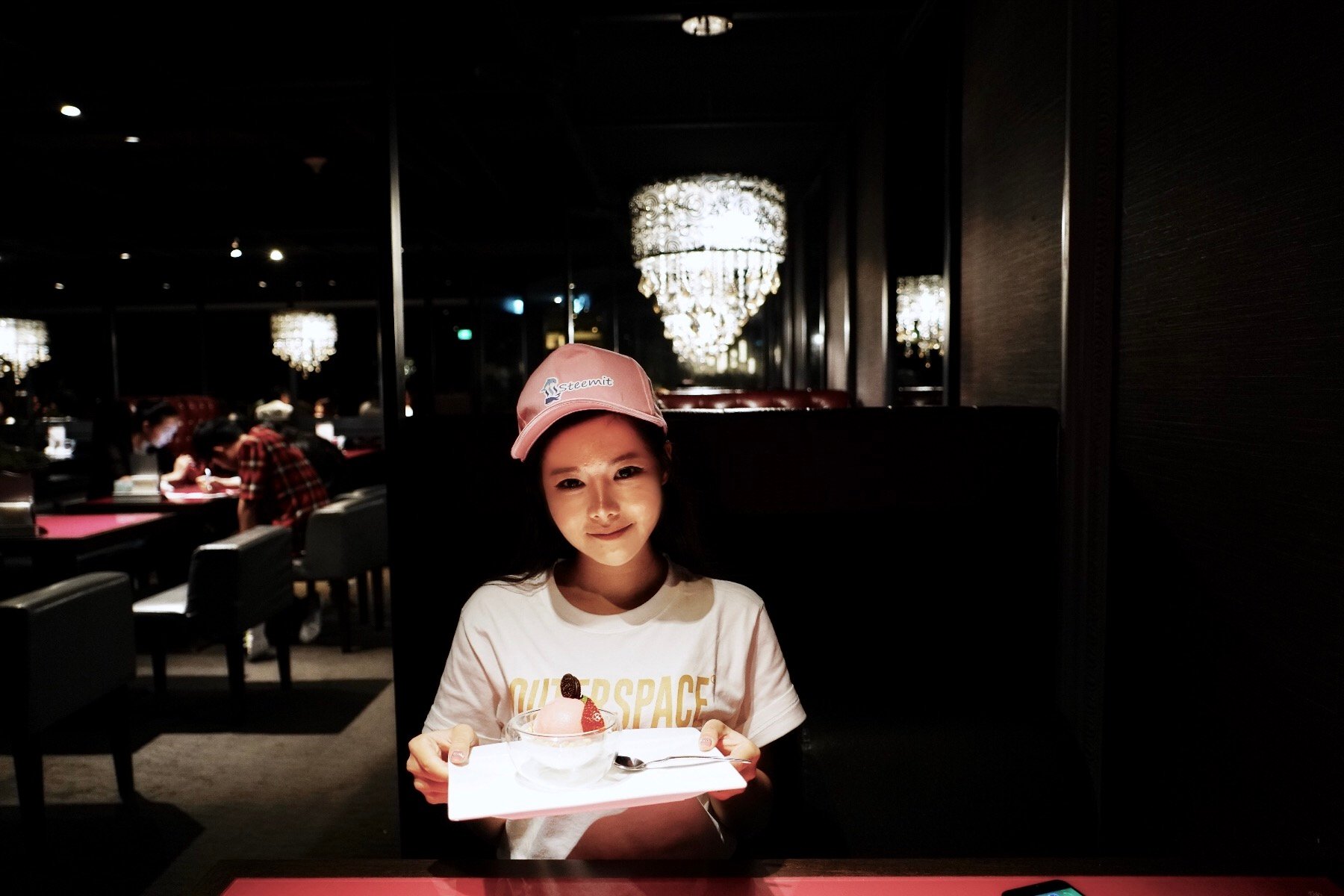
That wraps up the Chamonix Teppanyaki gourmet experience. Did you feel hungry reading the post and looking at the pictures? I hope so! Food is one of the primary reasons people visit Taiwan, and today, it continues to be considered a food capital in Asia. Today, we learned that the Japanese occupation of Taiwan has helped it infuse the very best of Japanese food culture into the already expansive list of exotic foods on offer.
I can't think of a Teppanyaki place that exudes quite as much luxury as Chamonix. Indeed it was a shock to me to find that there can even be classy Teppanyaki. Still, i'm very glad that Chamonix have set a very fine example and I'm sure that if you decide to pay it a visit, you will be very happy that you did.
Taiwan really is a fascinating place, and I look forward to sharing more of my travel adventures there with you all.
Remember to vote for this post if you liked it, follow for more travel and food adventures, and leave a comment to let me know what you think!

美食和风景,可以抵抗全世界所有的悲伤和迷惘。带大家游览过台湾的风景名胜之后,怎能不找一家超有爱的餐厅,抚慰一下辛苦了一天的身体,心灵和大家的胃。在台湾,有很多非常好吃并且地道的日本料理,正巧,我也是日本料理迷。这次我选定的餐厅是台湾著名王品餐饮集团旗下的创意铁板烧餐厅,夏慕尼新香榭铁板烧。除了王品集团一贯注重的精美餐厅装潢和优质服务,这家餐厅也用心改善人们对传统铁板烧的老式印象,出其不意的把法式料理和酒吧吧台的设计风格完美结合。我对这家餐厅充满了好奇,怀着满心的未知数,一起走进餐厅吧。
整个餐厅的第一印象就是怀旧与未来感相结合,把永恒,经典和创新,前卫相结合,刚刚还在老电影旧剧照的画框边合影,一转眼就来到了被一串串闪烁光芒的水晶珠帘包围的超大型圆桌旁边,中间柱子上是复古胶片感十足的旧照片,而圆桌则由下向上打着射灯,透出时尚前卫的射灯。低调的奢华感仿佛把我带入了未来世界。服务员热情礼貌的把我带入座位,和酒吧一样,你会与陌生人一起共享,只不过这次在吧台中央的不是调酒师,而是今晚的主厨,他将负责整个圆桌客人的餐点。看了菜单之后,我选择了最为经济实惠的铁板烧套餐,前菜,汤,主食和甜点各选一样,因为菜单做成了画册一样,有每道菜的解说和图片,所以变得非常好选择。
选好餐之后,就一起静静欣赏主厨施展手艺,再把你选的食物做好并送到你面前。这样观摩烹调全过程的模式,非常少见,所以我觉得非常有趣。只见主厨一会耍起了铲子,游刃有余的技艺,犹如武侠小说中大侠们挥刀舞剑般帅气,一会主厨又玩起了酒精上点火,滋滋作响,如同变魔术般把一道道本是普通的食材,两下变成一盘盘精致诱人的料理,主厨超高的技艺让我的眼睛应接不暇。首先是主厨现场煎的帕玛森起司面包,还搭配了洋葱酱,蜂蜜芥末和玫瑰盐作为调味酱料,当然还有无限畅饮的香槟。接下来是热前菜松露蒸蛋跟干贝,看起来简单,吃起来味道却很特别。接着服务员端来摆盘精美的海鲜,在你面前注入热乎乎的海鲜清汤。
另一盘依旧是摆放艺术的生牛肉,当滚烫的牛肉高汤注入盘中,牛肉片瞬间被烫熟,食材和做法有多新鲜,尽在口中和眼里。接下来是凡尔赛鲜果沙拉,色味俱全,让人垂涎欲滴。松露百菇沙拉,一款新鲜口味的沙拉。上主菜前,服务员送来柠檬雪芭,冰沙口感酸甜,目的是为了调换口味。主餐来了,鸡排海鲜双拼,鱼肉和鸡肉都很鲜很嫩,让人可以交换口味,细细品味。嫩煎松露菲力牛肉,牛肉很嫩,几乎入口即化。法式海鲜盘里有烤大虾,鱼肉和干贝,吃起来非常有鲜甜的口感。
最后餐厅还非常体贴的设计了炒饭,只见樱花虾炒饭颗粒分明,不油不干火候刚好,虾很酥脆,口味偏甜。主餐告于段落,服务员带着我离开铁板烧的区域,来到了甜品区,非常有质感的沙发和吊灯,营造出法式甜品屋的温馨。非常少女色的覆盆子沁心奶酪,搭配花俏的裝飾,草莓、OREO和清新的薄荷叶,冰沙酸甜的味道,清爽极了。浓情巧克力慕斯,精致漂亮,糖浆,水果和小叶片画龙点睛,更衬托主角的味道醇正。这一盘盘贴心的餐点完全满足了顾客的所有夙愿。今天的台北美食之旅就到这里吧,之后还有更多有趣的美食故事要和大家分享。
